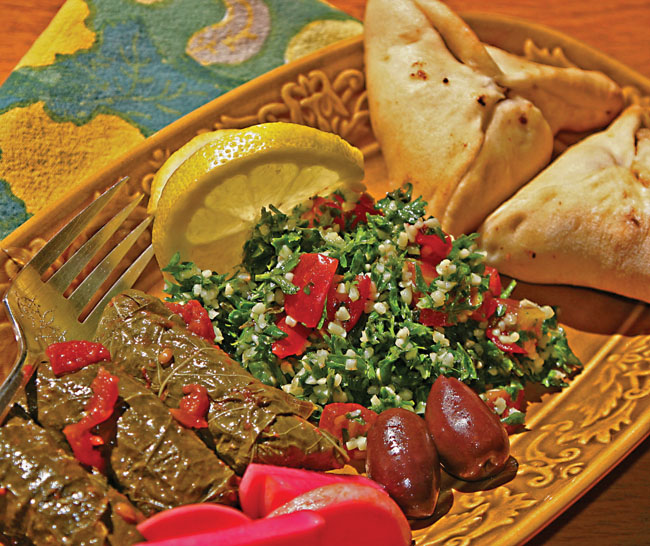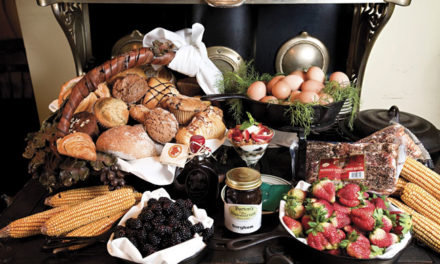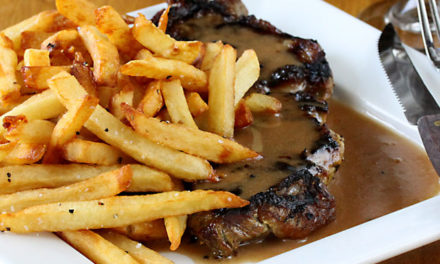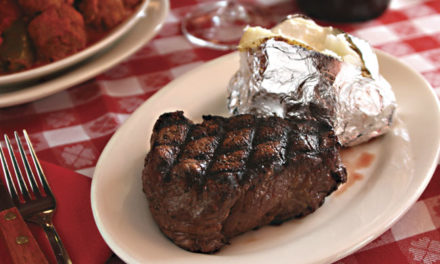Here are the recipes we promised from Christine Barbour’s article in the August/September issue. These recipes were adapted by Barbour from her grandmother’s church cookbook, Magic Cookery, which comes from Saint Nicholas Orthodox Cathedral in Los Angeles, California.
Pickled Turnips
5 pounds turnips
1 can beets
Wash and trim turnips (do not peel). Cut into chunks. Salt and let stand for several hours, drain. Place turnips along with beets and beet juice into a large nonreactive bowl or jar. Cover with a brine made from 1/3 part boiled water to 2/3 parts white vinegar. Add salt to taste and peppercorns, chili peppers or garlic cloves if you like. Keep refrigerated—turnips will be ready to eat in a week or less (depending on how thick the chunks are).
Tabouli
1 bunch green onions, chopped into thin slices
3 bunches parsley, leaves only, washed, drained and chopped fine
1 bunch mint, chopped fine (or 3 teaspoons dried mint)
3 or 4 large ripe tomatoes, chopped
1/4 cup cracked wheat (bulgar or borgul), soaked in warm water and squeezed dry
1/2 cup olive oil
salt and pepper to taste
cayenne pepper (optional) to taste
lemon juice to taste
Combine all ingredients and mix thoroughly. Adjust seasoning and lemon to taste. Let sit for at least an hour or so, so cracked wheat can absorb the flavors before serving.
Stuffed Grape Leaves, meatless version
1 jar grape leaves, packed in brine
1 cup canned chickpeas
1 cup olive oil
1 cup rice, long grain, washed and drained
2 bunches parsley (leaves only), washed and chopped
1 bunch mint, chopped (you can substitute 1/4 cup of dried mint if necessary)
1 bunch green onions, chopped
salt and pepper to taste
dash of cayenne pepper
1 large can whole tomatoes, chopped
lemon juice to taste
2 cups water
Soak the grape leaves for several hours in several changes of water to get the salt out. Mix together chickpeas, olive oil, rice, parsley, mint, onions, and seasonings.
Lay one grape leaf flat on the work surface with the base of the leaf closest to you. If the stem end is prominent, cut it away with a paring knife, but keep the leaf intact. Put a heaping tablespoon of the filling at the base of the leaf and form into a log shape. Roll the filling up in the leaf, folding each of the sides in and continuing to roll until it is a firm, cigar-like package. You want the roll to be reasonably tight so it doesn’t unravel in the cooking, but loose enough that the rice can expand.
Line a heavy kettle with vine leaves or a plate (so rolls will not lay on the bottom of the pot and scorch). Lay the leaf rolls side by side in the pot, layering on top of each other until all the leaves or filling are used. Pour the tomatoes and their juice over the rolls and add two cups of water. Bring to a simmer and cover, cooking over low flame until rice is cooked.
Serve warm or room temperature, with a squeeze of lemon and a dollop of plain, unsweetened Greek yogurt. If you make them ahead, let them cool in their juice, refrigerate and then bring to room temperature to serve.
(These can also be made with a meat filling of 3/4 cup rinsed, drained rice to 1 1/2 pound coarsely ground lamb shoulder, salt, pepper and a dash of cinnamon. Mix filling together, roll and cook the same way. Serve hot.)
















